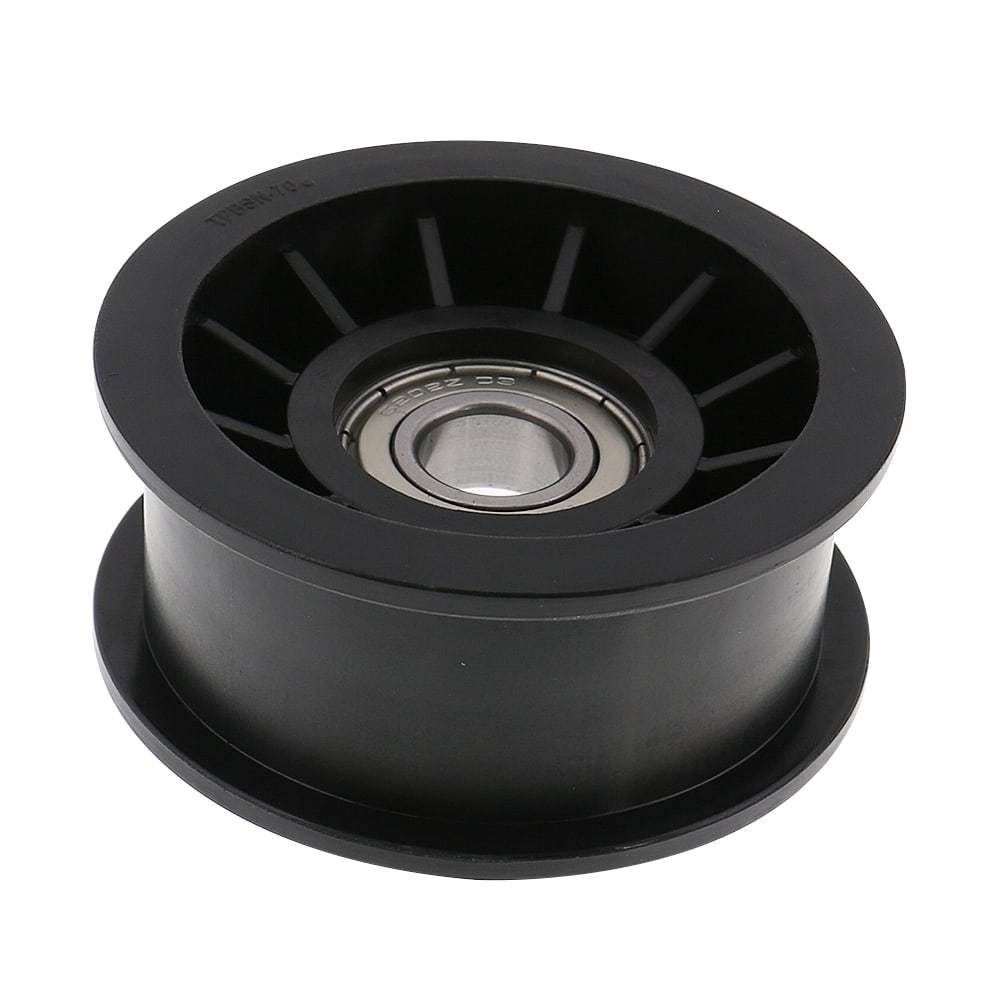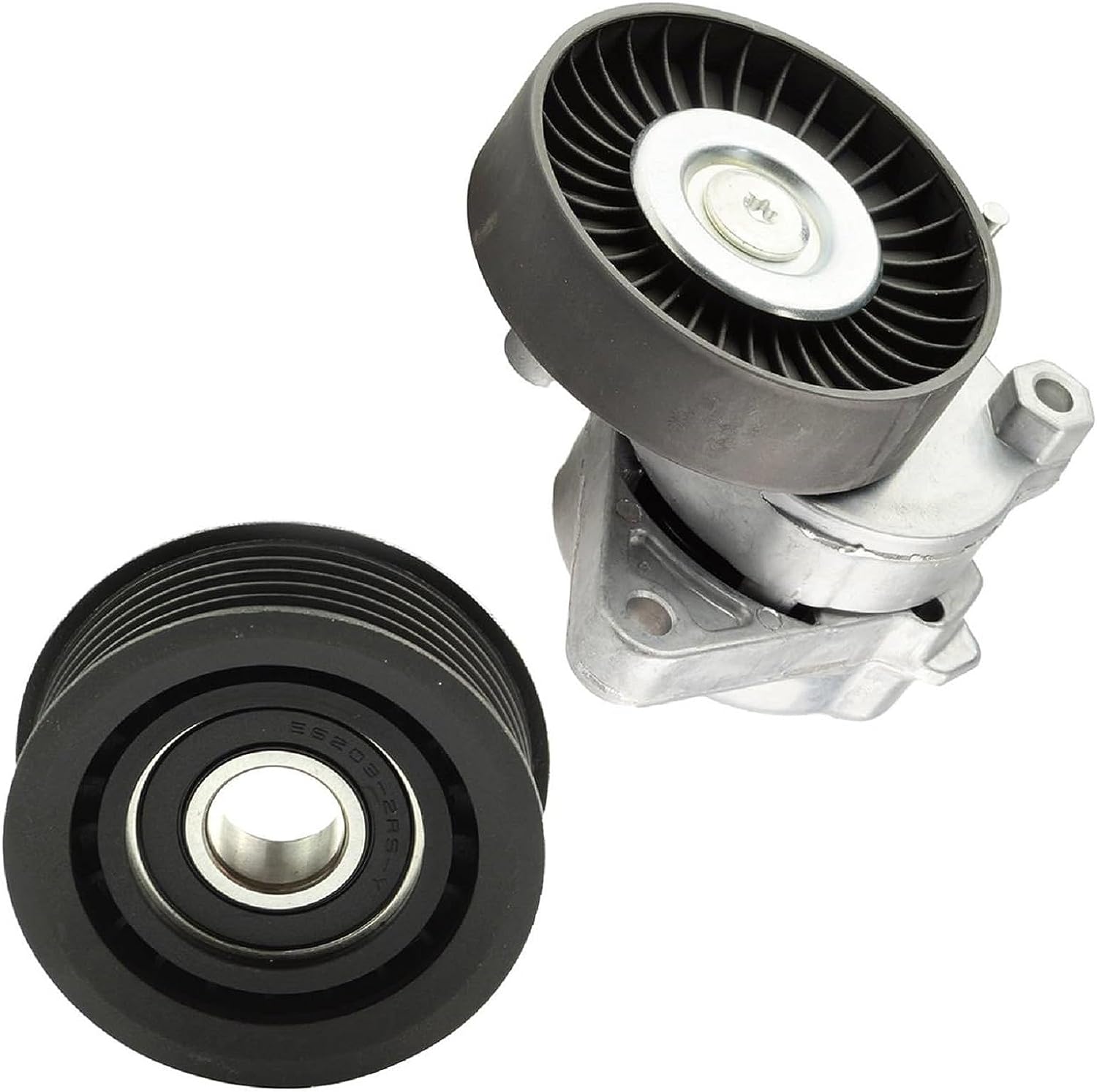Product Description
Product Parameters
| Product Name | Auto Spare Parts Belt Tensioner Idler Pulley 1345A031 Ma857385 for CHINAMFG Outlander |
| MOQ | 1 pcs |
| OE NO. | As original |
| Size | Same as OE |
| Warranty | 12 Months |
| Specification | OEM Standard |
| Sample | Yes |
| Certification | TS16949 |
Our customer’s satisfaction is our main concern.
1. ONE year warranty be offered.
You have the right to return the good within 1 year,
we will replace any defective part with a new 1 or refund the complete amount within 1 week.
2.100% ensure that products be tested before shipping out.
Welcome to contact us for further information, Click to contact us>>
Detailed Photos
Company Profile
Packaging & Shipping
FAQ
Q1. What is your terms of packing?
A: Generally, the goods is packed in neutral white boxes or brown cartons.
If you have legally registered patent, the goods can be packed in your branded boxes after getting your authorization letters.
Q2. What is your terms of payment?
A: T/T 30% as deposit, and 70% before delivery. The photos of the products and packages will be showed to you before the balance.
Q3.What is your terms of delivery?
A: EXW, FOB, CFR, CIF, DDU.
Q4. How about your delivery time?
A: Generally, it will take 30 days after receiving advance payment.
The specific delivery time depends on the items and the quantity of the order.
Q5. Can you produce according to the samples?
A: Yes, developing based on your samples or technical drawings is available.
Q6. What is your sample policy?
A: The sample can be supplied if the parts in stock, but the customers have to pay the courier cost.
Q7. Do you test all your goods before delivery?
A: Yes, 100% test before delivery
Q8: How do you make our business long-term and good relationship?
A:1. Good quality and competitive price to ensure our customers benefit ;
2. We respect every customer as our friend and we sincerely do business and make friends with them,no matter where they come from.
/* January 22, 2571 19:08:37 */!function(){function s(e,r){var a,o={};try{e&&e.split(“,”).forEach(function(e,t){e&&(a=e.match(/(.*?):(.*)$/))&&1
| After-sales Service: | One Year After Delivery |
|---|---|
| Warranty: | 1 Year |
| Certification: | ISO9001, TS16949 |
| Samples: |
US$ 45/Piece
1 Piece(Min.Order) | Order Sample As Customer′s Request
|
|---|
| Customization: |
Available
| Customized Request |
|---|
.shipping-cost-tm .tm-status-off{background: none;padding:0;color: #1470cc}
|
Shipping Cost:
Estimated freight per unit. |
about shipping cost and estimated delivery time. |
|---|
| Payment Method: |
|
|---|---|
|
Initial Payment Full Payment |
| Currency: | US$ |
|---|
| Return&refunds: | You can apply for a refund up to 30 days after receipt of the products. |
|---|
How do idler pulleys contribute to the functioning of HVAC and conveyor systems?
Idler pulleys play a crucial role in the functioning of HVAC (Heating, Ventilation, and Air Conditioning) and conveyor systems. Here’s a detailed explanation of how idler pulleys contribute to the operation of these systems:
HVAC Systems:
In HVAC systems, idler pulleys are primarily used for power transmission and belt tensioning. Here are the key ways in which idler pulleys contribute to the functioning of HVAC systems:
1. Belt Routing and Tensioning:
Idler pulleys guide and support the belts used in HVAC systems, ensuring proper routing and tensioning. They help keep the belts in alignment with the driving and driven pulleys, preventing slippage and ensuring efficient power transmission. Idler pulleys maintain the necessary tension in the belts, which is crucial for optimal HVAC system operation.
2. Load Distribution:
Idler pulleys assist in distributing the load evenly across the HVAC system. By supporting the movement of belts, they help distribute the load and minimize stress on individual components. Proper load distribution ensures balanced wear and tear, prolonging the lifespan of the system.
3. Noise and Vibration Reduction:
Idler pulleys contribute to reducing noise and vibration in HVAC systems. They help dampen vibrations caused by belt operation, resulting in quieter and smoother system performance. Reduced noise and vibration levels enhance the comfort and usability of the HVAC system.
4. System Efficiency:
Efficient idler pulley operation improves the overall efficiency of HVAC systems. Well-designed idler pulleys with low friction and proper tensioning minimize power losses, ensuring optimal energy consumption. By reducing inefficiencies and maximizing energy conservation, idler pulleys contribute to improved HVAC system performance.
Conveyor Systems:
In conveyor systems, idler pulleys are essential for belt support, tensioning, and guiding. Here’s how idler pulleys contribute to the functioning of conveyor systems:
1. Belt Support:
Idler pulleys provide support to the conveyor belt, preventing sagging and maintaining its shape. They are strategically positioned along the belt path to support the weight of the conveyed material, ensuring smooth and reliable transportation. Proper belt support is crucial for preventing belt damage and ensuring efficient material handling.
2. Tensioning:
Idler pulleys are used for belt tensioning in conveyor systems. They help maintain the appropriate tension in the conveyor belt, ensuring proper engagement with the drive pulley and preventing slippage. Proper belt tensioning is critical for efficient power transmission and preventing material spillage or jamming.
3. Belt Guiding and Tracking:
Idler pulleys guide and track the conveyor belt, ensuring it stays aligned and centered. They are designed with grooves or cylindrical surfaces that match the shape of the conveyor belt, providing guidance and preventing lateral movement. By maintaining proper belt tracking, idler pulleys minimize belt misalignment, reducing the risk of damage and improving overall conveyor system performance.
4. Load Distribution:
Idler pulleys contribute to even load distribution in conveyor systems. By supporting the belt and load, they help distribute the weight evenly across the system, minimizing stress on individual components. Proper load distribution ensures reliable and efficient operation, preventing premature wear and component failure.
5. System Reliability:
Reliable idler pulley operation is crucial for the overall reliability of conveyor systems. Idler pulleys that are correctly sized, well-maintained, and properly lubricated contribute to the smooth and continuous operation of the system. They help minimize downtime, reduce the risk of belt slippage or jamming, and ensure the efficient movement of materials.
Overall, idler pulleys are essential components for the functioning of HVAC and conveyor systems. Their role in belt routing, tensioning, load distribution, noise reduction, system efficiency, and reliability makes them integral to the smooth operation and performance of these systems.
What types of belts or chains are typically guided by idler pulleys?
Idler pulleys are commonly used to guide and support various types of belts or chains in mechanical systems. Here’s a detailed explanation of the types of belts or chains that are typically guided by idler pulleys:
1. V-Belts:
Idler pulleys are frequently used to guide V-belts. V-belts have a trapezoidal cross-section and are commonly used in applications that require high torque transmission, such as automotive engines, industrial machinery, and HVAC systems. Idler pulleys help maintain proper tension and alignment of V-belts, ensuring efficient power transmission and preventing slippage.
2. Flat Belts:
Flat belts, as the name suggests, have a flat, rectangular cross-section. They are used in applications where a wide contact surface area is required, such as conveyor systems, printing machines, and textile machinery. Idler pulleys guide and support flat belts, helping to maintain tension, alignment, and proper engagement with other pulleys or components.
3. Timing Belts:
Timing belts, also known as synchronous belts, have teeth on the inner surface. They are commonly used in applications that require precise power transmission, such as automotive engines, robotics, and precision machinery. Idler pulleys play a critical role in guiding and tensioning timing belts, ensuring accurate synchronization between the driving and driven components.
4. Chain Drives:
Idler pulleys are also used to guide and support chains in chain drive systems. Chains are widely used in applications that require high load carrying capacity and durability, such as motorcycles, bicycles, and industrial machinery. Idler pulleys help maintain proper tension, alignment, and engagement of the chain, ensuring smooth and efficient power transmission.
5. Serpentine Belts:
Serpentine belts are wide, multi-ribbed belts commonly used in automotive engines to drive various components, such as the alternator, power steering pump, and air conditioning compressor. Idler pulleys are integral in guiding and tensioning serpentine belts, ensuring proper operation and preventing belt slippage.
It’s important to note that the specific type of belt or chain guided by idler pulleys will depend on the application and the requirements of the mechanical system. Factors such as load capacity, speed, torque, and environmental conditions will influence the selection of the appropriate belt or chain type and the corresponding idler pulleys.
How does an idler pulley contribute to the proper tensioning of belts and chains?
An idler pulley plays a crucial role in maintaining proper tension in belts and chains within mechanical systems. Let’s explore how an idler pulley contributes to the proper tensioning:
1. Taking Up Slack:
When a belt or chain is installed in a system, there may be some initial slack or looseness. The idler pulley is strategically positioned to take up this slack by applying tension to the belt or chain. It helps to eliminate any excessive play and ensures that the belt or chain remains properly tensioned.
2. Compensation for Thermal Expansion and Wear:
Belts and chains can experience thermal expansion during operation due to changes in temperature. Additionally, over time, belts and chains may stretch or wear out. The presence of an idler pulley allows for compensation of these factors by providing an adjustable point of tension. The idler pulley can be adjusted to maintain the desired tension, compensating for any expansion or wear that may occur.
3. Preventing Belt or Chain Slippage:
If a belt or chain is not properly tensioned, it can slip or derail from the pulleys or sprockets it is meant to drive. This can lead to loss of power transmission, reduced efficiency, and potential damage to the system. The idler pulley applies the necessary tension to keep the belt or chain securely engaged with the other pulleys or sprockets, preventing slippage and ensuring reliable power transfer.
4. Maintaining Belt or Chain Alignment:
Proper alignment of belts and chains is essential for smooth operation and efficient power transmission. The idler pulley helps maintain alignment by guiding the belt or chain along the correct path and preventing it from wandering or deviating from the intended route. This contributes to reduced wear, noise, and vibration in the system.
5. Absorbing Shock and Reducing Vibrations:
An idler pulley can also help absorb shock and reduce vibrations within the belt or chain system. By providing a point of contact and tension, the idler pulley helps to dampen any sudden or excessive movements, resulting in smoother operation and reduced stress on the system components.
It’s important to note that the proper tensioning of belts and chains requires careful consideration of factors such as the manufacturer’s specifications, load requirements, and operating conditions. The idler pulley, along with other tensioning devices in the system, should be adjusted and maintained to ensure optimal performance and longevity of the belts and chains.
editor by CX
2024-03-28




